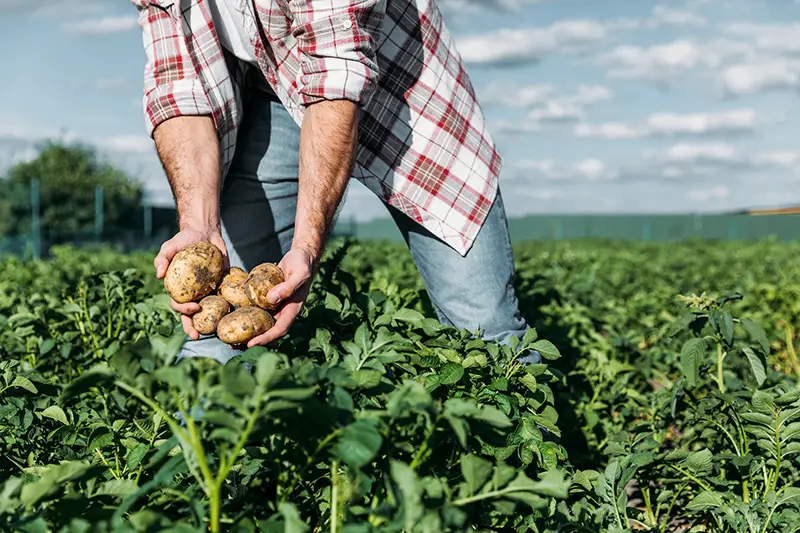Click here to get this post in PDF
Farming is a lot more than planting seeds and harvesting crops. Some steps you can take for high yield farming to ensure you get the most out of it, whether that means increasing yields or just making things easier for yourself.
Here are some tips:
1. Test your Soil
You can test your soil to see what nutrients it is lacking. If you want to know for sure, get a sample from a small part of the field and send it to a lab for analysis.
The first thing that needs to be done when testing your soil is determining what type of fertilizer or amendment you need in order:
- Clay Soil: This type of soil contains more than 80 percent clay particles, making them heavy and hard-packed. The lack of aeration means that these soils don’t hold much water. They also don’t absorb nutrients well enough for plant growth because there aren’t many openings where roots can get them into the topsoil.
These clays need special attention during planting season so as not to change too rapidly after germination. Otherwise, problems can occur, such as poor germination rates due to low moisture retention ability within narrow spaces between rocks. This would otherwise prevent proper root development within those areas where roots naturally grow if given enough room.
2. Fertilize Right
Fertilizer is one of the most important tools in your toolbox, but it can be difficult to determine how much and what type of fertilizer you need. The best way to get the most out of your nutrients is by testing them periodically.
Here’s how:
- Before planting each spring or after transplanting in the fall, test soil samples for nitrogen levels using a kit from your local nursery or garden center. Nitrogen levels should be between 5 and 15 pounds per acre; if they’re below 5 pounds per acre, add some top-quality fertilizer such as blood meal at 1 pound per 100 square feet (or more if necessary) until the desired level is reached.
- When plants are actively growing during warm weather periods such as midsummer through late autumn months when temperatures stay above 60 degrees Fahrenheit but not above 90 degrees Fahrenheit—and when rainfalls aren’t frequent enough to dilute chemical compounds released into soil during heavy rains—fertilize with well-balanced liquid organic potash/blood meal blends containing two parts nitrogen plus 1 part potassium nitrate or potassium sulfate (1 cup per 100 square feet).
3. Start with a good Seed
The quality of seed can vary widely. The most important thing to remember is that the quality of your seeds will determine how well they grow and how much yield you get from them. This can be affected by many things, including:
- The source of your seed (how it was grown)
- The treatment given to it before being planted
- How long has it been stored at various temperatures and humidity levels
4. Control Weeds
Weeds are a major problem for farmers. They compete with the crop for nutrients, water, and light. And they can harbor pests and diseases.
Weed control is important in every modern farming operation because weeds reduce crop yield, quality, and value.
Weed control requires knowledge of weed biology: what they look like; where they grow; how they reproduce (seed or root); etc. You also need to know what chemicals are best suited for killing certain weeds (such as dicamba), which ones aren’t effective against certain weeds (such as Chickory), etc.
5. Rotate your Crops
Rotating crops is a great way to help control pests and diseases and prevent soil erosion.
In addition, it allows for better nutrient use by ensuring that each crop uses its nutrients in the best possible way. You can help your farmers with some techniques to improve productivity.
6. Practice Conservation Tillage
Conservation tillage is a technique that involves leaving the soil undisturbed after planting. This reduces erosion, increases organic matter, and reduces the need for pesticides.
It also helps keep down costs by reducing greenhouse gas emissions from machinery used on your farm.
Conservation tillage has been proven effective at reducing erosion while increasing crop yields in heavy clay soils and sandy ones!
Conclusion
It may seem like a lot of work to get your farm up and running, but once you build the right infrastructure and start developing a specialty product, it will be worth it.
You may also like: Agribusiness Trends to Watch in 2022
Image source: Depositphotos.com

